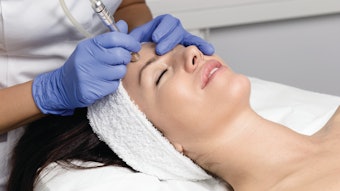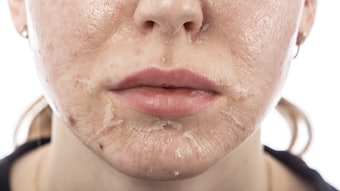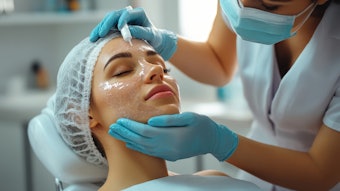
Rosacea's effect on quality of life can be devastating even when the physical symptoms are relatively mild, according to recent patient survey data. The National Rosacea Society (NRS) has designated April as Rosacea Awareness Month to educate the public on the impact of this chronic and widespread facial disorder now estimated to affect more than 16 million.
“The earliest signs of rosacea are often overlooked because people assume they are temporary and will go away,” said John Wolf, MD, chairman of dermatology at Baylor College of Medicine. “Unfortunately, without medical treatment the effects of rosacea often persist and become increasingly severe. Through greater rosacea awareness, more individuals should seek diagnosis and treatment before their condition becomes a serious intrusion on their emotional, social and professional lives.”
According to new patient surveys conducted by the NRS, most rosacea patients feel the negative emotional and social impact of their condition regardless of severity or subtype. In a survey of 1,675 rosacea patients, 90% said that rosacea’s effect on their personal appearance had lowered their self-esteem and self-confidence, and 88% said they had suffered embarrassment. They also reported a wide range of other negative feelings, including frustration, cited by 76%; anxiety and helplessness, each noted by 54%; depression, 43%; anger, 34%; and isolation, 32%. Fifty-two percent of the respondents said they had avoided face-to-face contact because of the disorder.
Among survey respondents who suffer from the facial redness of subtype 1 (erythematotelangiectatic) rosacea alone, 82% said the condition had a negative impact on their general outlook on life—and for those with moderate to severe redness, the figure rose to 90%.
In a previous NRS survey on the social impact of rosacea, 61% of those with only subtype 1 symptoms said their condition had inhibited their social lives, and the number rose to 72% among those who reported their redness was moderate or severe. Seventy-seven percent of patients with the bumps and pimples of subtype 2 (papulopustular) rosacea alone noted that their social life had been negatively impacted, and 85% of patients whose symptoms included subtype 3 (phymatous) rosacea, involving thickening of the skin, had been negatively affected.
Among the respondents who had the eye irritation of subtype 4 (ocular) rosacea, 71% said the disorder’s effects had inhibited their social lives. The good news is that more than two-thirds of respondents in both surveys said effective medical therapy had improved their emotional and social well-being, and this is now expected to further improve with the availability of treatment for facial redness.
During Rosacea Awareness Month and throughout the year, the NRS will conduct public education activities to reach the millions of rosacea sufferers who may not realize they have a medical condition that can be treated, emphasizing the warning signs and urging those who suspect they may have rosacea to see a dermatologist. Bulk quantities of educational materials are available to health professionals for their patients through the NRS website at www.rosacea.org.
Although rosacea varies from one patient to another, the primary signs may include flushing or transient erythema (redness), persistent or nontransient erythema, papules (bumps) and pustules (pimples), or telangiectasia (visible blood vessels), according to the NRS standard classification of rosacea, developed by a consensus committee and review panel of 17 experts worldwide. Secondary features may include burning or stinging, plaques (raised patches on the skin), a dry appearance, edema (swelling), ocular manifestations and phymatous changes, in which the skin thickens.
During April and throughout the year, individuals may call the National Rosacea Society’s toll-free telephone number at 1-888-NO-BLUSH for information. The NRS offers Rosacea Review, a newsletter for rosacea patients; a “Rosacea Diary” to help patients identify and avoid lifestyle factors that may trigger flare-ups in their individual cases; and other booklets to help patients understand and manage their condition.
Information is also available by visiting the NRS website at www.rosacea.org; writing the National Rosacea Society, 196 James Street, Barrington, Illinois 60010; or via e-mail at [email protected]. Follow the National Rosacea Society on Facebook, Twitter and Pinterest for up-to-date information and tips on rosacea.










